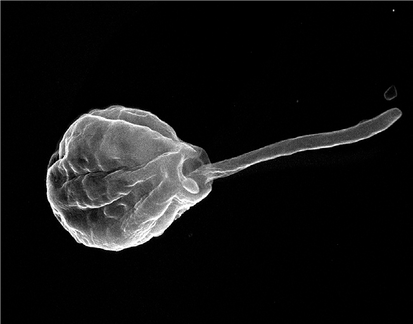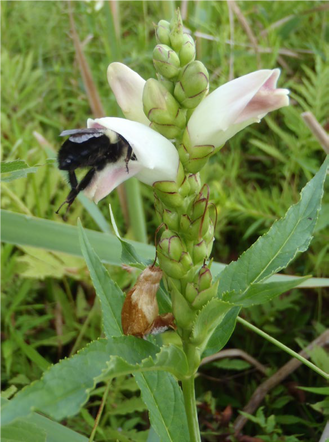|
Written by: Maggie Lewis, PhD Student, Hamby Lab and Tais Ribeiro, PhD student, Espindola Lab Do you know the bitter taste of kale? Or the spicy flavor of mustard greens? These flavors are created by the plants often for defending against herbivory. These chemicals are non-essential to the plant’s growth, with diverse properties and classes, such as alkaloids and terpenoids. Herbivores might find the taste too bitter – and they have no salad dressing to mitigate that – and avoid to feed on it, being the plant protected against their attacks. These compounds could be even deadly! But, just like the bitter tea you drink when you have a stomach ache, they can also have positive and medicinal properties, including anti-fungal and anti-parasitic effects. Although secondary metabolites are synthesized throughout the plant, they exist at different concentrations in different tissues. They can even be present in nectar and pollen, which could affect pollinator visitation and behavior.  Figure 1. Scanning electron micrograph of the trypanosome Crithidia bombi. Image taken from Schmid-Hempel 2019 Figure 1. Scanning electron micrograph of the trypanosome Crithidia bombi. Image taken from Schmid-Hempel 2019 Dr. Rebecca Irwin is a Professor in the Department of Applied Ecology of the North Carolina State University (NCSU) and is interested in understanding the ecology of plant-pollinator relationships, including their response to environmental changes. In order to understand the effect of secondary compounds in bees, Dr. Irwin, together with a series of collaborators and graduate students, conducted several studies covering different aspects of this interaction, including the extent to which bees are exposed to these compounds and how these compounds affect bee and plant fitness. So how much exposure are the bees actually subjected to? According to the Optimal Defense Theory, plants will invest more energy in protecting parts that are valuable to themselves, such as flowers and fruits, which are involved in reproduction. Within flowers, and based on this same theory, one would also expect tissues involved directly in plant reproduction (such as pollen) to display higher concentrations of secondary compounds than those not directly involved in reproduction (such as nectar). Dr. Irwin and collaborators tested the concentrations of secondary metabolites in the nectar and pollen of 31 plant species across 21 families, including Rosaceae (roses), Fabaceae (legumes), and Asteraceae. They found that the predictions of the Optimal Defense Theory were upheld in most species, with pollen having higher chemical concentrations than nectar (Palmer-Young et al., 2019). They also found that these chemicals occurred more commonly and in a greater diversity of plants than they had initially hypothesized, with at least one class (e.g., alkaloids, amino acids, flavonoids, or terpenoids) present in almost all of these plants. These results indicate that pollinators are indeed regularly exposed to these compounds. But again, this exposure does not necessarily mean something harmful, especially when the third part in this interaction comes into the game: parasites! Crithidia bombi (Figure 1) is a gut trypanosome that infects bumble bees, inducing lethargy and impairing reproduction. It can be transmitted via fecal contact between individuals both in the colonies and in the plants visited. Recent studies on Bombus impatiens bumble bees suggest that their diet can impact their ability to fight infections. For example, when bumble bees were provided with sunflower pollen diets, they had significantly reduced parasite loads compared to bees fed on buckwheat pollen diets (Giacomini et al., 2018). It is possible that bumble bees will feed on these secondary metabolites to “self-medicate” against parasite infections. However, further research is needed to fully understand these mechanisms and this is an area of active investigation in Dr. Irwin’s lab.  Figure 2. Turtlehead inflorescence with two open flowers being visited by a bumblebee. Image taken from Richardson et al. 2016. Figure 2. Turtlehead inflorescence with two open flowers being visited by a bumblebee. Image taken from Richardson et al. 2016. Secondary metabolites can affect not only insect physiology, but also behavior. By altering bee foraging behavior and pollination rates, secondary nectar metabolites could impact plant reproduction. To better understand their influence in interactions between plants, pollinators and their parasites, Dr. Irwin, together with Dr. Leif Richardson, conducted nectar manipulation studies using turtlehead flowers (Chelone glabra; Figure 2). They experimentally manipulated the amount of two secondary metabolites within the nectar of turtlehead flowers and recorded bee foraging behavior. Bees infected spent more time foraging on and were more likely to re-visit flowers with high secondary metabolite concentrations than uninfected bees (Richardson et al., 2016), suggesting that nectar secondary metabolites may enhance pollination rates by acting as pollinator attractants when pollinators are infected. Dr. Irwin’s work provides a growing body of evidence that floral secondary metabolites play an important role in mediating interactions between plants, pollinators, and pathogens, an understudied aspect of pollinator and pollination biology. Parasites and pathogens, including Crithidia bombi and Nosema bombi, have the potential to cause substantial reductions to bumble bee colony fitness and may be one of many contributing factors to widespread bumble bee declines in North America. Understanding how different flowers and their secondary floral metabolites alter the outcome of bee-pathogen interactions could help combat this decline, benefitting pollinators susceptible to disease. For example, landscape managers could selectively plant flowers with beneficial metabolites to help bees combat pathogen infections. Through on-going research, Dr. Irwin and her research group will continue to advance our understanding of the mechanisms driving these triparite interactions, ultimately generating knowledge that may contribute to the development of more “pollinator-friendly” landscapes. Authors: Maggie Lewis is a third year PhD student in the Hamby Lab, studying the interactions between spotted-wing drosophila and yeast and fungal microbes. Twitter: @EntoMags Tais Ribeiro is a first year PhD student in the Espindolab, studying the evolution of floral host specializations in oil-collecting bee genus Chalepogenus. Twitter: @taismattoso References Giacomini, J. J., Leslie, J., Tarpy, D. R., Palmer-Young, E. C., Irwin, R. E., & Adler, L. S. (2018). Medicinal value of sunflower pollen against bee pathogens. Scientific Reports, 8(1), 1–10. https://doi.org/10.1038/s41598-018-32681-y Palmer-Young, E. C., Farrell, I. W., Adler, L. S., Milano, N. J., Egan, P. A., Junker, R. R., … Stevenson, P. C. (2019). Chemistry of floral rewards: intra- and interspecific variability of nectar and pollen secondary metabolites across taxa. Ecological Monographs, 89(1), 1–23. https://doi.org/10.1002/ecm.1335 Richardson, L. L., Bowers, M. D., & Irwin, R. E. (2016). Nectar chemistry mediates the behavior of parasitized bees: Consequences for plant fitness. Ecology, 97(2), 325–337. https://doi.org/10.1890/15-0263.1 Comments are closed.
|
Categories
All
Archives
June 2024
|
Department of Entomology
University of Maryland
4112 Plant Sciences Building
College Park, MD 20742-4454
USA
Telephone: 301.405.3911
Fax: 301.314.9290
University of Maryland
4112 Plant Sciences Building
College Park, MD 20742-4454
USA
Telephone: 301.405.3911
Fax: 301.314.9290

 RSS Feed
RSS Feed




